Federalists and Anti-Federalists Explained
The Federalists and Anti-Federalists were the first political factions of the U.S.. They arose out of a debate over the ratification of the 1787 Constitution and went on to form the basis of our current two-party system.[1][2]
Below we explain the difference between the Federalists and Anti-Federalists to find out how these two political factions shaped America’s Constitution, the major American political parties, American party politics, and the country.
Understanding the Differences Between the Federalists and Anti-Federalists
The Federalists (pro-North, pro-city, pro-protectionism, “big government” conservative-liberals who favored modernization) and the Anti-Federalists (pro-South, pro-rural, “free-trade,” “small government” radical-liberals who favored agrarian democracy) were America’s first political factions.
Although third parties and party switching is part of America’s story, very generally speaking (and the Era of Good Feelings aside):
- The Federalists were a party founded by Alexander Hamilton in 1787-1792 that essentially went on to become Whigs and then Republicans.
- The Anti-Federalists were a movement that essentially went on to become Thomas Jefferson’s Democratic-Republicans and the Jacksonian Democrats.
These factions can be understood by reading their respective Federalist and Anti-Federalist papers, where the Federalists Papers support a strong central government and the anti-Federalist Papers support a looser union of confederate states (TIP: In other words, both factions are named after positions on Federalism).
Likewise, the factions can be understood by examining America’s founders, the politics of post-Revolution America, and the first few elections.[3]
The Character of the Founding Factions: The Federalists Vs. Anti-Federalists
One has to understand, the split between Federalists and Anti-Federalists isn’t a split between conservative and liberal, this is a split between two different types of Americans (both of whom rejected King George’s classically conservative Monarchy and its tenants).
One type of American was more Republican, one more Democratic, one more Urban, one more Rural, one more Northern, one more Southern, one more Populist, one more Elite, one more toward France’s liberalism, one more toward English Whiggish liberalism.
In words, each faction attracted different demographics and dominated different regions with different climates and interests. And importantly, each faction had their own idea of how “the land of liberty” comprised of sovereign states should be structured now that they were free from the tyranny of Kings and Church States (free from true classical conservatism).
Simply, the founding patriots were each different types of liberals who came together as two factions supporting two conflicting platforms (this is the environment in which the Constitution itself was born). One must keep this in mind when learning about the history of the United States political parties. The schism isn’t just American, it is a natural left-right split that speaks to the heart of the human condition (as Jefferson notes in the quote below).
The above can be explained in more detail by the following descriptions:
- The Federalist faction was the precursor to the Republican party and was a political faction that became America’s first political party (the Federalists). Speaking in simple terms, they had a “big government” platform and were favored in the North. Today we might say their members were conservative-liberals, like a mix between the English Whigs and Tories. They specifically had what we might today recognize as three notable factions, one more classically conservative like the Tories (the core of this party in history), one more classically and socially liberal like the Whigs (a precursor to figures like Clay and Lincoln), and one more socially conservative and nativist (a precursor to parties like Anti-Masons and Know-Nothings). They were generally the more elite faction and were favored by more populated areas. They wanted to create a new superpower, a “New England,” this of course required central banking, central government, and a standing army. They wanted the Constitution to replace the Articles of Confederation, but didn’t want a Bill of Rights. Generally we can say, in comparative terms, the federalists were the elite, right-wing, and conservative party who favored federal-based representative republicanism.
- The Anti-Federalist faction was the precursor to the Democratic party. They never became a party under the name Anti-Federalists, rather the faction went on to become the Democratic-Republicans and then Democrats. They had a “small government” platform and were favored in the South. Today we might say their members were like a mix between the New Whigs, Labour, and the French liberals of the revolution. They specifically had what we might today recognize as three notable factions, one more classically and socially liberal like the New Whigs (Madison represents this well for example), one more radically classically liberal like the French revolutionaries (Jefferson represents this well), and one more socially conservative and nativist (a precursor to the Confederates and States’ Rights parties). They were generally the more populist faction and were favored by more rural areas. They wanted to create an agrarian Democracy with so much liberty from government… that government couldn’t even tell you not to own slaves (an ongoing issue). They wanted the Articles of Confederation to stand, but later they demanded a Bill of Rights. Generally we can say, in comparative terms, the antifederalists were the populist, left-wing, and liberal party who favored state-based popular democracy.
“Liberty is to faction what air is to fire, an aliment without which it instantly expires.” – James Madison, father of the Constitution and Bill of Rights
“The alternate domination of one faction over another, sharpened by the spirit of revenge, natural to party dissension, which in different ages and countries has perpetrated the most horrid enormities, is itself a frightful despotism.” – George Washington’s Farewell Address in which he warned his fellow Americans about the dangers of political parties. He himself would not run under a party name, he was the only President not to serve under the banner of a party.
TIP: Under George Washington, before the parties became official, those who would later be called Federalists were called “pro-administration” and those who would later be called anti-Federalists and then Democratic-Republicans were called “anti-administration.” The namesakes of the factions/parties speak to the stances of the factions/parties at their formation. If you stood with the more conservative and more pro-government party then you were pro-administration, then Federalist, then National Republican, then Whig, then Republican… and then history gets complex and things changed.
TIP: Unless you know your party history, it should strike you as odd that the Federalist/Republican platform was the “big government” platform favored by the North and the Anti-Federalist/Democratic the “small government” platform favored by the South. After-all, most of us would see this as being opposite today. Likewise, it should seem odd that factions and some ideological positions seem to be spread out over parties, rather than there being a clear left-wing/liberal and right-wing/conservative party. Although we can explain these things by saying something simple like “the parties essentially switched platforms over time” (where the socially liberal faction of the Federalists/Republicans and socially conservative faction of the Antifederalists/Democrats essentially switched over time), but the true full story is found in a detailed walk through American history (as it is the events of Civil War and Civil Rights, switching factions within parties and third parties, and generally hundreds of years of history that explain things properly). Of course, if one wants to take that walk through history to understand the character of the founding factions, their leaders, and the country, then starting with the Federalist and Anti-Federalist founders like Hamilton, Jefferson, and Madison is an excellent choice.
“Men by their constitutions are naturally divided into two parties: 1. Those who fear and distrust the people, and wish to draw all powers from them into the hands of the higher classes. 2. Those who identify themselves with the people, have confidence in them, cherish and consider them as the most honest and safe, although not the most wise depositary of the public interests.
In every country these two parties exist, and in every one where they are free to think, speak, and write, they will declare themselves. Call them, therefore, Liberals and Serviles, Jacobins and Ultras, Whigs and Tories, Republicans and Federalists, Aristocrats and Democrats, or by whatever name you please, they are the same parties still and pursue the same object.
The last one of Aristocrats [federalists, liberal-conservatives] and Democrats [anti-federalists, more democratically minded liberals] is the true one expressing the essence of all.” —Thomas Jefferson to Henry Lee, 1824. ME 16:73
The General Ideology of America’s Founding Factions
Now that we have the basics covered, let’s cover some specifics about the founders and their writings.
To set the stage, it is important to realize, all of America’s founders were liberals who championed the liberal principles democracy, republicanism, and federalism (see the namesakes of the parties).
The founding factions actually fought over which faction deserved the title Federalist, and later over Jefferson’s use of Democratic-Republicans (as he took both terms for one party).
For example, the Anti-Federalists accused Federalists of corrupting the term “Federalist” to imply a strong federal government, rather than a looser union of entities with unique constitutions (what we would today call a confederacy and which America originally was, as evidenced by the Articles of Confederation which the Federalist supported Constitution replaced).[4]
The main difference between the Federalists and Anti-Federalists is that Anti-Federalists, like Patrick Henry and Thomas Jefferson, wanted less central power than Federalists like Alexander Hamilton (and at that time Madison).
From this viewpoint, the Federalists were liberal-conservatives like the old English Whigs, and the Anti-Federalists were slightly more radical liberals like the then new English Faction, “the New Whigs.”[5]
Below we point out some more key differences between the Federalists and AntiFederalists and tell the story of how these factions became today’s Democrats and Republicans.
“…that if we are in earnest about giving the Union energy and duration, we must abandon the vain project of legislating upon the States in their collective capacities; we must extend the laws of the federal government to the individual citizens of America; we must discard the fallacious scheme of quotas and requisitions, as equally impracticable and unjust.” —Alexander Hamilton in Federalist Paper No. 23, in support of a strong central government (a government he hoped to someday lead before his life was cut short by a fatal duel with Aaron Burr).
“Two political sects have arisen within the U. S. The one believing that the executive is the branch of our government which the most needs support; the other that like the analogous branch in the English Government, it is already too strong for the republican parts of the Constitution; and therefore in equivocal cases they incline to the legislative powers: the former of these are called federalists, sometimes aristocrats or monocrats, and sometimes Tories, after the corresponding sect in the English Government of exactly the same definition: the latter are styled republicans, whigs, jacobins, anarchists, disorganizers, etc. these terms are in familiar use with most persons.” –Thomas Jefferson in a letter to John Wise, here he makes it clear he thinks the Anti-Federalists republicans, whigs, jacobins, anarchists, disorganizers and Hamilton and his Federalists Tories (conservatives)… but Hamilton and his Federalists didn’t see themselves this way, remember they went on to be called Republicans and Democrats (both liberal ideologies).
Key Differences Between the Federalists and Anti-Federalists
- The Federalists wanted a central bank, global trade with Europe, and a stronger Military, the Anti-Federalists wanted a militia-based agrarian society.
- The Federalists wanted a strong central government and preferred Republicanism, the Anti-Federalists wanted a focus on states’ rights and preferred Democracy.
- The Federalists wanted to replace the Articles of Confederation with the Constitution, the Anti-Federalists wanted to keep the Articles.
- The Federalists wanted the Constitution only, the Anti-Federalists wanted the Bill of Rights.
- Ideologically, the Federalists tended to favored the British Whigs and the Glorious Revolution (although they were accused of being Tories), the Anti-Federalists tended to favor the French radical revolutionaries.
- The Federalists generally favored the North and had strongholds in New York City and Boston, the Anti-Federalists were generally favored in the South and had strongholds in Virginia and support from Georgia and South Carolina.
- Federalists included Alexander Hamilton, John Jay, John Adams, and Gouverner Morris. The Anti-Federalists included Thomas Jefferson, Patrick Henry, Samuel Adams, and George Mason. Meanwhile, figures like George Washington and James Madison had more complex views.
FACT: None of the founding fathers truly supported slavery (although Georgia and South Carolina complicate the story a bit). However, the anti-Federalist position was that slavery would stand if it meant “small government”, while the Federalists like Hamilton were more willing to be abolitionists. See the founders on slavery.
“I learn with pleasure that republican principles are predominant in your state, because I conscientiously believe that governments founded in them are most friendly to the happiness of the people at large; and especially of a people so capable of self government as ours. I have been ever opposed to the party, so falsely called federalists, because I believe them desirous of introducing, into our government, authorities hereditary or otherwise independant [sic] of the national will. these always consume the public contributions and oppress the people with labour & poverty.” – Jefferson
“It’s not tyranny we desire; it’s a just, limited, federal government…. Real liberty is neither found in despotism or the extremes of democracy, but in moderate governments.” – Hamilton
READ: The Federalist and Anti-Federalist papers
The Federalist Papers ExplainedThe Anti-Federalist Papers ExplainedTIP: See Burke’s An appeal from the new to the old Whigs, in consequence of some late discussions in Parliament, relative to the Reflections on the French Revolution. It isn’t an easy read, but it shows the split between the two types of liberalism America was founded on from an outside perspective.
TIP: See the difference between liberal and conservative (from a historical standpoint).
Federalism: Crash Course Government and Politics #4. A look at America’s founding factions the Federalists and Anti-Federalists.A Quick History of America’s Founding Factions: The Federalists and Anti-Federalists
Both the Federalist and Anti-Federalist factions grew out of an argument over 1777’s Articles of Confederation (America’s first founding document, partly based on the Iroquois Confederacy [debatable], but mostly on the longstanding European, Roman, and Greek political traditions including the confederate Achaean League ).
The Ol’ Confederacy Vs. Union Argument
The Articles of Confederation promoted a confederation of states with a weak central government (a weak Union of sovereign states, rather than a strong one). The confederacy had caused, among other things, economic problems like a weak dollar following the 1783 Treaty of Paris (which recognized the 13 states as sovereign, not the United States as an entity).
The economic problems, and the fear that the states would not be able to fend off another European invasion, led the Articles eventually being reformed at 1787’s Constitutional Convention by the Congress of the Confederation. TIP: See types of governments for a discussion on Federations, Unions, and Confederacies.
The main question of the Convention being [in overly simple terms], “should the Articles be reformed, or should they be replaced with Madison’s new Constitution (which promoted a Federation of states with a stronger federal government) as laid out in the Virginia plan?”
The Anti-Federalist coalition formed to oppose the Constitution and keep the Confederacy (those who didn’t want Madison’s mixed-government with a central power, like Patrick Henry, Thomas Jefferson, and the southern agrarians), while the Federalist formed to oppose them (those who saw a need for order and America’s place as an eventual superpower like Hamilton and the North Eastern bankers and merchants).
The story of the battle of the Federalists and Anti-Federalist who arose around the debate over federalism vs. confederacy works like this:
The Formation of the Founding Factions: Federalists vs. Anti-Federalists
The Federalist coalition, a faction and later an official party, was built by Hamilton as a coalition of bankers and business people, largely in the North. Hamilton’s coalition was built to oppose the then unnamed Anti-Federalist coalition, which was a faction and never a party (it would however evolve into Jefferson’s Democratic-Republicans).
The Anti-Federalists had begun publishing papers under pen names like Brutus and Cato in reference to Cato, a Tragedy (a story about standing up against the Tyranny of Caesar, where Henry’s “give me liberty or give me death” and Nathan Hale‘s “I only regret that I have but one life to lose for my country.” lines come from, and one of the more popular works of the era).
Hamilton, keeping in this tradition, published under the name Publius (a reference to Publius Valerius, one of four Roman aristocrats who led the overthrow of the monarchy, who was “a cut above Caesar, Brutus, and Cato”).[6]
The 160 short essays of the founders contained in the Federalist and Anti-Federalist papers, show clearly that the Federalist founders wanted more respect for America on the world stage and the Anti-Federalists wanted a more democratic agrarian life focused on individual liberty.
The Federalists saw a future in which America was an economic superpower and ally to the other great nations like Britain, while the Anti-Federalists were weary of debt and national banks.
The Federalists wrote the Federalist papers to promote Madison’s plan, Federalism, and the Constitution. The Anti-Federalists wrote their Anti-Federalist papers to warn of big Government and to promote keeping the Articles of Confederation.
Thus, as should be clear now, the founding factions that become the modern political parties:
- The Federalist Party, the first voter-based party in the world, founded by Alexander Hamilton. A faction that became the first American political party existing from the 1790’s – 1816 (when most of its members became Whigs under Henry Clay, and then Republicans under Lincoln in 1861 in the third party system). Hamilton’s Federalist ideology was opposed by the more radical-liberal, individualist, and Nationalist sentiment of the south (a sentiment which is reflected in the Anti-Federalist ideology).
- The Anti-Federalists, who formed and published their papers shortly before the Federalists, and were led by Henry and Jefferson (and later Madison, he was originally a Federalist). They were pro-south, favored individual liberty, but not enthusiastic about a central government and debt. The Anti-Federalist faction would go on to become the Democratic-Republicans (an official party) under the Third President of the U.S. President Thomas Jefferson in 1801, then would see Madison as its President, and then would finally become the Democratic Party under Andrew Jackson in 1829 in the second party system.
TIP: During the Era of Good Feelings (in the early 1820’s under Monroe) America had a one-party system. That party was the Democratic-Republicans. The Jacksonian Democrats and Jefferson’s anti-Federalists are of the same line, as are the Democratic-Republicans, but don’t try to draw to simple of a conclusion. The Federalists and Democratic-Republicans both gave birth to the National Republicans, Whigs, and then Republicans (plus there are third parties like Know-Nothings and Free-Soilers to consider here).
TIP: Despite each faction having differences of opinion (and despite slavery), both factions were centered-liberal parties, as “being conservative” would have meant being a Kingsman or loyalist, and post 1776 no founder was that (or would at least admit to it).
The Anti-Federalists. A look at the Anti-Federalists.FACT: Hamilton was a New Yorker, first Treasury Secretary, and one of the most conservative founding fathers in regards to favoring English-style economics, banking, and a central government (AKA they supported Federalism like the other Federalists). We owe to Hamilton (like J.P. Morgan and Wilson) some thanks for our current economic standing (although, if the story doesn’t hint it, this is a matter of perspective). Learn more about Hamilton.
FACT: Hamilton was a distant relative of FDR, he was one of FDR’s heroes. FDR also admired Jefferson (as did his cousin Teddy who cited Jefferson in his 1912 Bull Moose platform).[7][8]
FACT: After losing the battle over Confederacy vs. Federation, the South would later demand that the Constitution be Amended to ensure individual liberty, one of the most important compromises ever made. In the Bill of Rights, we get a document that Hamilton opposed, but Jefferson and Madison supported, which ensures America’s Democratic tradition. Funnily enough, Madison, our founding philosopher, drafted both the Constitution and Bill of Rights, he was the Virginian founder who was both a Federalist and Anti-Federalist, and one of the most well-read founders.
“You say that I have been dished up to you as an Anti-Federalist, and ask me if it be just. My opinion was never worthy enough of notice to merit citing; but, since you ask it, I will tell it to you. I am not a Federalist, because I never submitted the whole system of my opinions to the creed of any party of men whatever, in religion, in philosophy, in politics, or in anything else, where I was capable of thinking for myself. Such an addiction is the last degradation of a free and moral agent. If I could not go to heaven but with a party, I would not go there at all. Therefore, I am not of the party of Federalists.” —Thomas Jefferson sure made Anti-Federalism look attractive didn’t he? Remember though, the Anti-Federalists were so liberal that they allowed for slavery. The reality is a mix of conservative and liberal is always needed, this is complicated today the same way it was then, where Jefferson sees a Tory, Hamilton saw a liberal.
What Did and Didn’t Change: The Anti-Federalists to Democrats
We can trace a line between the founding factions, the Union and Confederacy of the Civil War, and then to today’s parties.
However, we cannot draw a straight line due to countless factors that are way to complicated to mention here (a story that involves voter factions and third parties and different party systems and changing times).
However, it is obvious and appropriate to our conversation to point out that obvious, and that is:
The Democrats today are the party of the North (including positions on finance, trade, and central power) and the Republicans being the party of the South (including positions on the Southern farmer and individual liberty).
In words, it is [very roughly speaking] the complete opposite of how it used to be!
We tell the story of switching platforms in members here, and I don’t want to open up that can of worms too much here, but for this page we can say:
The events leading up to the Civil War polarized people geographically and broke the parties into factions (of which the Free Soil liberal democrats, the progressive Northern Republicans, and the Southern Conservative Confederate Democrats were not the same, nor was the Northern Know-Nothing Nativists who would have been Whigs in the past). See: 1860.
After Civil War Reconstruction, and up until Civil Rights in 64′, the parties changed over issues of race and big government progressivism.
Fast forward through the Gilded Age, Jim Crow, Teddy, FDR, and LBJ Civil Rights, and we see the Southern Conservative Faction switch to Republican and the Progressive Republicans switch to Democrat (very, very roughly speaking, to sum up all American history in a sentence here).
While this doesn’t paint a simple picture, it paints a clear one. That being, in any era, the Federalist spirit is in the citied regions and the Anti-Federalist spirit is found in the rural regions, and thus Anti-Federalists are like today’s Republicans (who the rural regions favor) and Federalists are like Today’s Democrats (who the citied regions favor).
Or rather, again, this is the very basic version of a complex story only meant to help illustrate our founding factions.
The reality is, so much has changed, any American can look to Hamilton or Jefferson or their allies with pride, when things seem divisive, look back to Monroe and Washington and those few moments of Good Feelings.
Thomas Jefferson vs. Alexander Hamilton (AP US History – APUSH Review)TIP: In early America, each faction held classical liberal views to different degrees. The Federalists were more to the right and were conservative liberals on most issues (and social liberals and classical conservatives on key issues), while the Anti-Federalists were more to the left and were radical liberals (and social conservatives on key issues) on most issues. Tellingly, there were arguments over which faction would be called Federalists, and later which would be called Republicans and Democrats (with the Press calling Jefferson’s Anti-Federalists both before they officially became the Democratic-Republicans). This can be easily explained by realizing America is a Federal Republic with a strong Democratic tradition, in words, both original factions held different stances on the same American values.
The Difference Between the Federalists and Anti-Federalists
To sum up the difference between the Federalists and Anti-Federalists:
- The Federalists called for a strong central government that promoted economic growth and global protectionist trade, and thus also wanted friendly relationships with Great Britain and were in opposition to revolutionary France. Pro North. Led by Washington, Adams, Jay, and Hamilton.
- The Anti-Federalists wanted an agrarian society and favored the radical liberalism of the French revolution (even if it would mean being socially conservative on issues like slavery down the road and forgoing economic prosperity in trade for being free from Government). Pro South. Led by Jefferson, Henry, and Madison.
The result is a split between North and South from day one, and in this regard, Hamilton shaped the economic policy of the North from the beginning, Jefferson shaped the “rebel spirit” of the South, and Madison shaped the country’s philosophical backbone.
- When we consider that the Northern economic policy won out, in the long run, we can say Hamilton and his Federalist shaped the current economic policy of America.
- When we consider the spirit of liberty, revolution, and small government are alive and well today, we can say Jefferson and his Anti-Federalists shaped the Democratic spirit of the country.
- When we consider our divisive political cultural, we can say, “we sure could use another Madison, Jefferson, Washington, or Monroe.”
FACT: The Federalist party controlled the federal government from inception until 1801, when it was overwhelmed by the Democratic-Republican (former Anti-Federalist) opposition led by Thomas Jefferson (the true Republican Party by name starts with Lincoln, while the Republican by action, but Democratic-Republican by name, starts with Jefferson; the term Republican is used A LOT in our history).
FACT: The second President John Adams was the first and only Federalist President (George Washington was a Federalist, but had no official political party when he served. Instead he famously warned about political factions. By the time Jefferson was the third President the official party was the Democratic-Republicans. Hamilton was never President, but he was Secretary of Treasury under Washington.
Where US Politics Came From: Crash Course US History #9TIP: Before Jefferson properly formed the Democratic-Republicans the pressed called the opposition party everything from Anti-Federalists to Democrats, to Republicans, to Democratic-Republicans. The naming can be confusing, so whether it is Jefferson, Jackson, Lincoln, FDR, or Reagan, you have to be able to look at party platforms and not names to properly understand the evolutions of parties and platforms (learn more about how the parties switched platforms).
- Anti-Federalism
- Federalist & Antifederalist
- Federalist & Antifederalist Positions
- Thomas Jefferson’s opposition to the Federalists, 1810
- Hamilton vs. Jefferson
- Federalist Papers – Wiki
- What did FDR admire in Thomas Jefferson and Alexander Hamilton.?
- Isaac Roosevelt
Two Full Years Of American History Taught Dialectically Is The Swiftest, Surest Path To Restoration Of Social And Political Health In The American Body Politic
https://newsfrombarbaria.
Originalism: A Short Course In American History - Who We Are And Where We Came From
https://newsfrombarbaria.
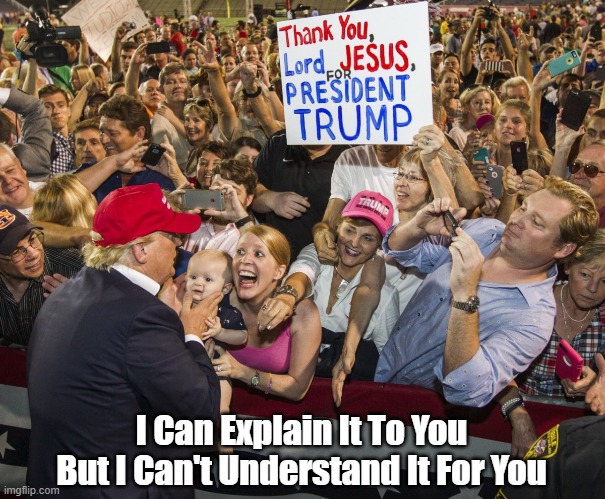
Teaching Civics And American History: Humankind's Race Between Education And Catastrophe
http://paxonbothhouses.
"How Sad It Must Be For Trump Supporters To Believe That Scientists, Scholars, Teachers And Journalists Have Devoted Their Entire Lives To Deceiving You, While A Reality TV Star With Decades Of Fraud And Documented Lying Is Your Only Beacon Of Truth And Honesty"
https://newsfrombarbaria.
Originalism: A Short Course In American History - Who We Are And Where We Came From
https://newsfrombarbaria.

Teaching Civics And American History: Humankind's Race Between Education And Catastrophe
http://paxonbothhouses.
https://newsfrombarbaria.

https://newsfrombarbaria.
"Do Wars Really Defend America's Freedom?" (Homage To Marine Commandant, Major General Smedley Butler)

A Majority Of Republicans Hold Negative Views About Higher Education
https://paxonbothhouses.
When Uneducated Populists Marginalize Educated Elites, Democracy Itself Wanes
http://paxonbothhouses.
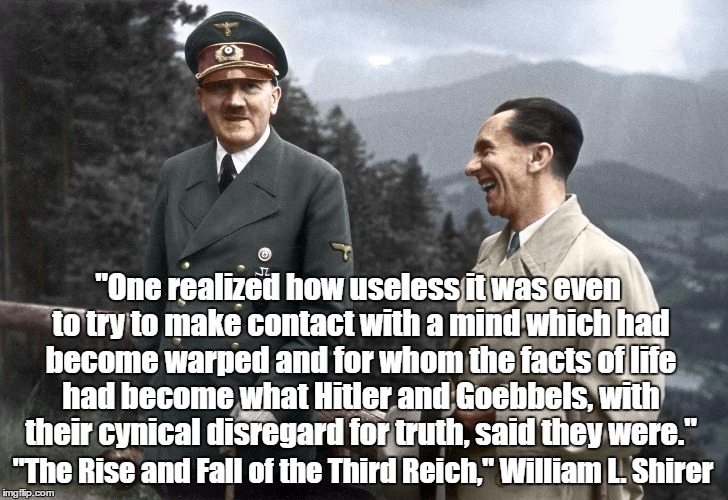
A Reminder From John F. Kennedy
https://paxonbothhouses.
Reprise: Trump Is The Symptom Of A Broken Educational System. (Howard Zinn Is The Fix)
http://paxonbothhouses.
Instruction And Education Aim At Antipodes
http://paxonbothhouses.
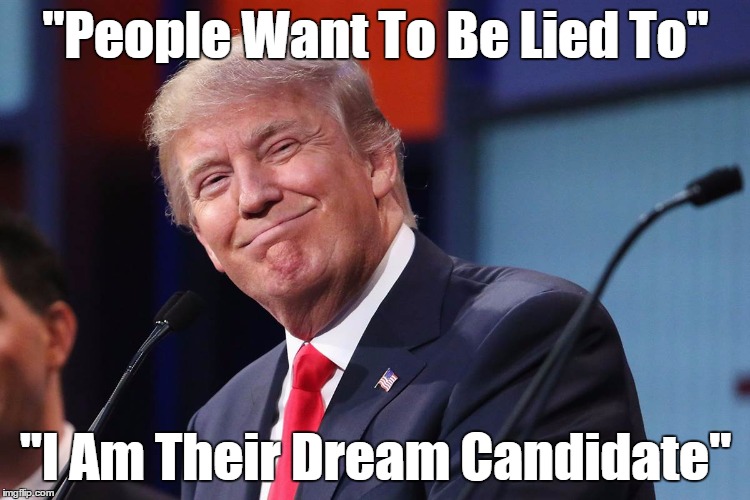
It Has Come To This: How Do Intelligent Citizens Deal With The Irredeemably Stupid, Ignorant And Self-Pithed People Who Have Taken Over? The Invasion Of The Body Snatchers Is Now Reality
https://paxonbothhouses.
Trump Is "Just" A Spearhead And A Symptom: Basically, Stupid People Have Taken Over
https://paxonbothhouses.
Dialogue With Fred Maske About "Conspiracy Theories That Have Changed The Course Of History"
Compendium Of Best "Pax" Posts On The Cornerstone Necessity Of Education https://newsfrombarbaria.blogspot.com/2020/07/compendium-of-best-pax-posts-on.html
Compendium Of Trump Videos That Reveal His Arrogance, Inhumanity, Stupidity And Cruelty



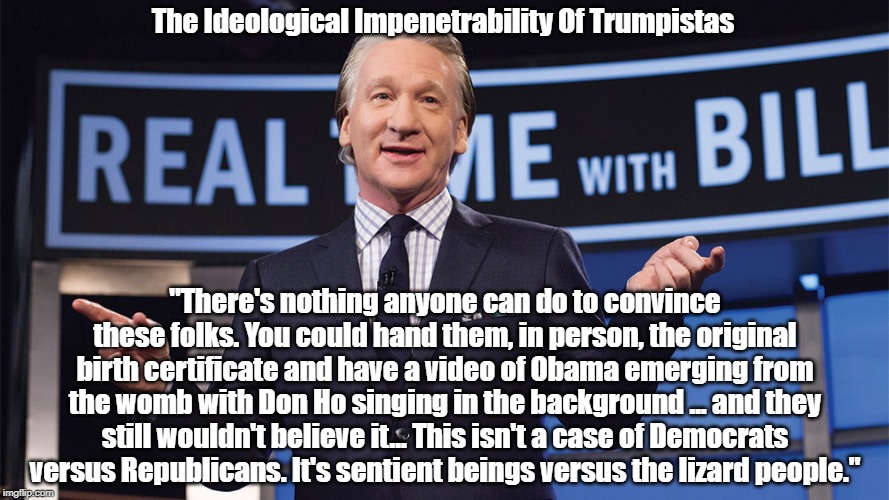
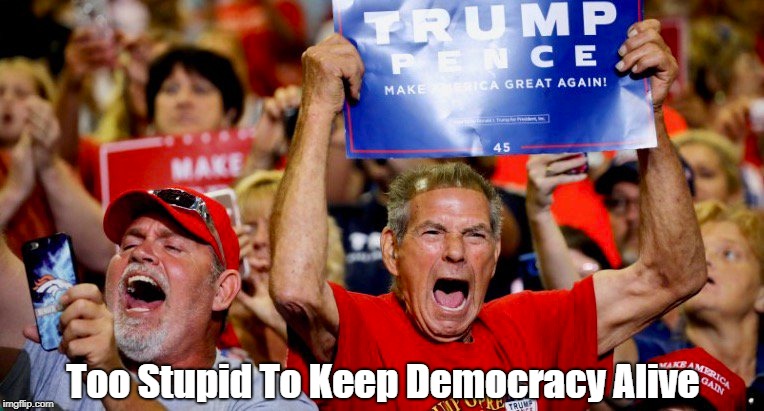
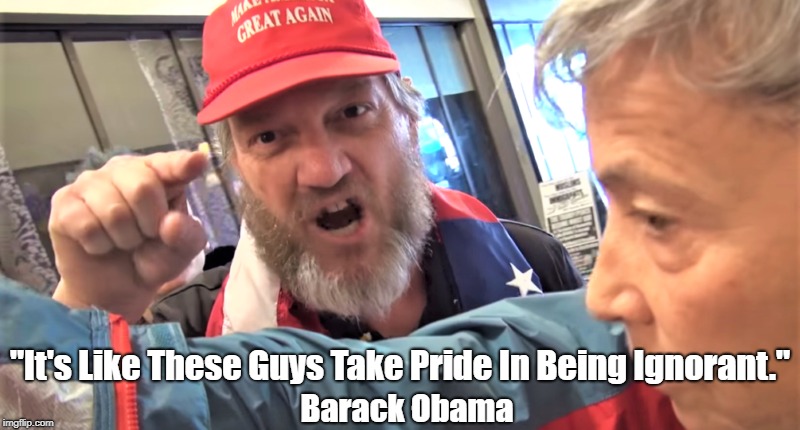
No comments:
Post a Comment